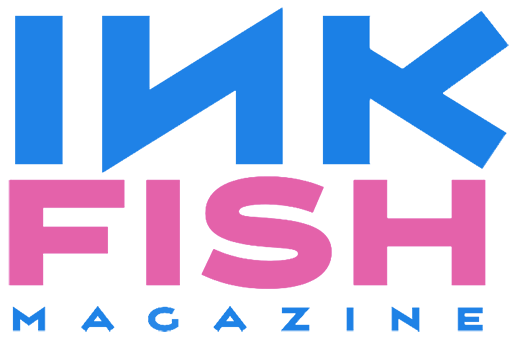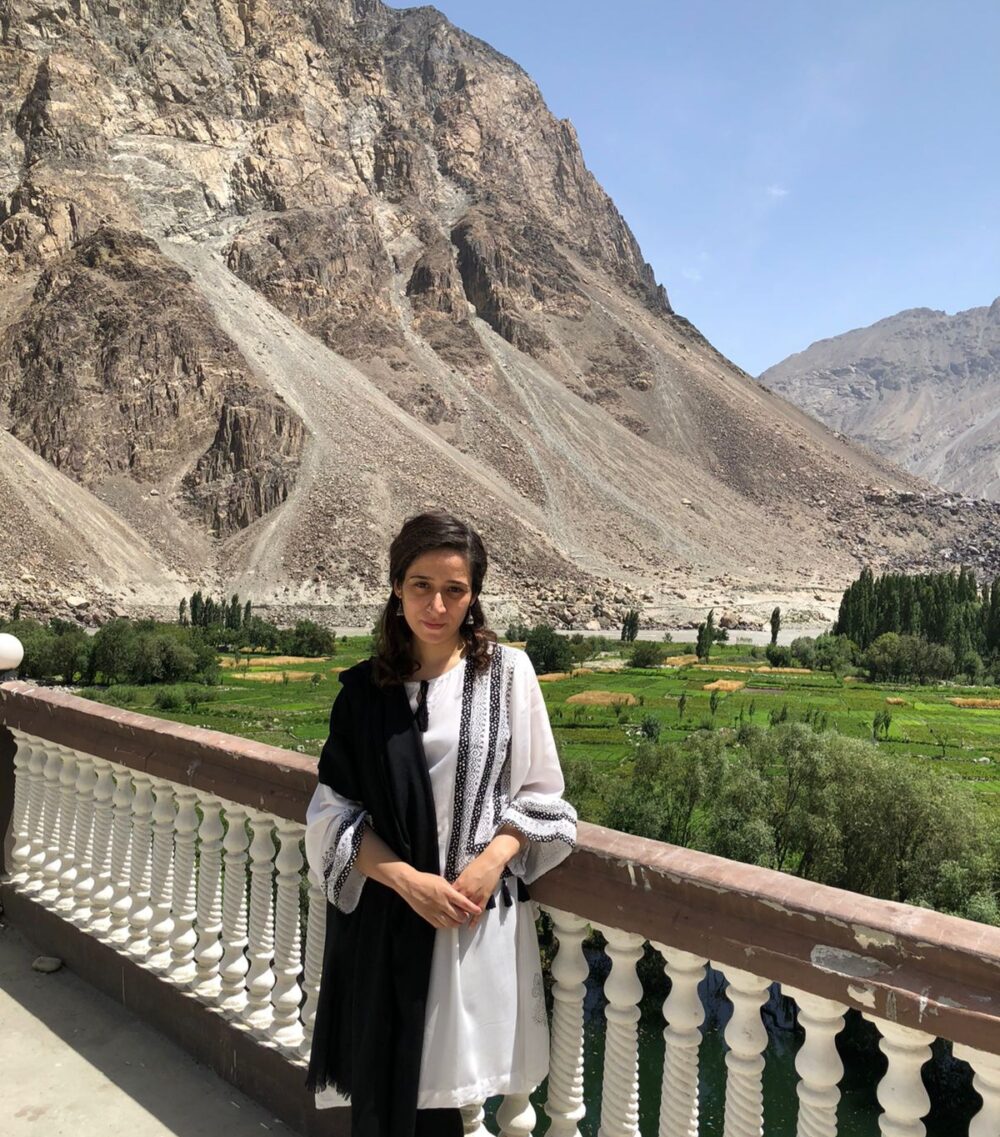Interview with Yumna Sadiq
Artist
Questions by Kate Horsley
Your work includes both poetry and visual art. Does one or the other of these feel primary to you, or are they both equal passions?
They go hand-in-hand for me. Sometimes I begin by creating characters visually, and then their background stories unfold naturally into poems. Other times, I’ll write a poem and then feel inspired to bring it to life through the visuals.
Your art is incredibly distinctive. How did it evolve? And which artists and writers have influenced you the most?
Thank you! My work has evolved quite organically over time. Initially, I was drawn to Tim Burton’s filmmaking style and quirky characters. I loved his animated short film, Vincent – that’s actually what first inspired me to start writing poems. Amna Hashmi, who taught me at art school and remains a mentor to this day, introduced me to world-building in art – an approach that’s become central to my practice. Hannah Höch’s photomontages and animated films like Children Who Chase Lost Voices have also influenced how I approach imagined worlds.
Some of my all-time favourite books are The Stranger by Albert Camus, Metamorphosis by Franz Kafka, and the manga Nonnonba by Shigeru Mizuki. I also love collecting whimsical children’s picture books – they open up imaginative possibilities. Books like The Codex Seraphinianus, with its beautifully mysterious and unreadable world, have also been a huge inspiration.
I grew up listening to my Nani (maternal grandmother), Sadaqat Malik, as she recounted stories of her childhood in Gaya, India, and her migration to Pakistan during the 1947 Partition. Her memories deeply shaped my love for storytelling.
Can you tell us a bit about your process? What inspires you in the everyday? Are there particular creative problems you encounter, and how do you solve them?
My process begins with either designing a character by using cutouts from old magazines, recipe books, and calendars or writing a rhyming poem. I gather observations from daily life: sounds from my surroundings, random insects that find their way into my home, or a story about a mythical flower I heard during my travels.
As I dig deeper into an imaginary world, I wonder: What other characters inhabit this world? What roles do these characters play? How do they react in different situations? What kind of challenges do they face, and can they overcome them? As the narrative develops – often in the form of rhyming poetry – the story begins to take shape.
Like most artists, I definitely run into stuck moments. When that happens, I try to step away: go for a walk, or binge-watch Korean shows. A friend once said something that stuck with me: “It’s okay to take breaks… as long as you come back to it!”

What is your favorite piece/series of your own work and what is the most experimental piece/series you’ve ever done?
One piece close to my heart is Map Face – Just an Ordinary Piece of Paper. It was the first little imaginary world I ever created, and it’s also when I discovered how fun and versatile collage can be as an artistic technique. The piece has a playful, slightly absurd tone that still makes me smile.
The most experimental work I’ve done would probably be a short stop-motion clip I made about a character named Gwenter. I narrated the entire thing through song—even though I’m definitely not a singer (and honestly, not very good at it!). But I went ahead with it anyway. It was one of those “just try it and see what happens” moments.
The piece of yours we’re publishing in Inkfish Edition 4 is so unusual and beautiful. Can you tell us the story of how it came to be and the work that went into making it so gorgeous?
Thank you! The Leek-Greens’ Hymns began with a simple question: How would a community of Leek-Greens communicate with the Sun? From there, I started imagining their mythical traditions and rituals—what fruits might hold special meaning, what offerings they’d give to a river spirit or a sacred stone.
The process was layered. I wrote short scenes, created accompanying visuals, and then shaped the poem around those elements. Interestingly, the scene with the mango came afterward. Mangoes mark the peak of summer, and since I was playing with the idea of the summer solstice, it felt fitting to weave that symbol into the work.
Visually, I worked with tones of blue, yellow, green, and orange—colors that evoke the sun’s energy and its gradual disappearance in the final scene. For the mango and certain food offerings, I used photographs, and there are a few small painted areas as well. The textures and color combinations helped reinforce the poem’s shifting moods and atmosphere.
I was experimenting with onomatopoeic language and invented chants that felt ancient, celestial, or ceremonial. I wanted the story to reflect the belief that everything in nature is alive with spirit—a perspective rooted in Japanese culture, which I find deeply moving. I’ve also had conversations with different communities about what they offer to the sea and how star alignment holds meaning for them. Those stories and voices found their way into this piece.
The focus of Inkfish Edition 4 is on nature and the environment. Are those themes that often find their way into your work?
Not all the time, but nature finds its way into my work in unexpected ways. In 2023, I created the air spirit, the Leek-Greens, and other characters tied to a fictional character named Orange. I used collage as the main technique, which gave the characters a surreal appearance. I hadn’t planned it, but the characters ended up resembling insects. That accidental resemblance became a starting point—my next step was to figure out the world they lived in and the story behind them.
I’ve spent time in the mountains and several different countrysides, and that’s why I’m drawn to the idea of landscapes and natural elements having spirits and emotions—winds that whisper, trees that listen, faeries that mourn. I’m fascinated by forgotten languages and mythical beings, and nature often becomes the stage—or even the character—for those ideas.
What are you working on at the minute?
Since the end of 2023, I’ve been working on a long-form story centered on a fictional character named Orange. It’s the most expansive narrative I’ve developed so far. I’ve been playing with different forms—collage, sound, stop-motion animation—while exploring how the story might expand beyond the page. There have been moments where I’ve felt creatively stuck, but stepping away and returning with fresh energy has helped the piece grow in unexpected ways.
About Yumna Sadiq
Yumna Sadiq is a visual artist whose work blends poetry, myth, and visual storytelling. Her art explores the intersection of fantasy, ecological change, and ancestral voice. She is currently developing a collection of hybrid poems and visual narratives.


